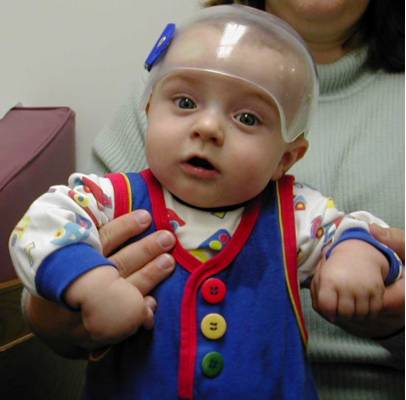P.A.P. Orthosis Cranial Remolding in Utah
Unique advantages of using the P.A.P. Orthosis
Transparent material allows the skin to be seen through the material facilitating visual inspection by the parents or caregiver. The visual inspection helps prevent skin breakdown, irritation, and possible sores. The material is more flexible than the traditional plastics used, which aids in suspension of the device upon the infant’s head, is less bulky, and also allows for growth modifications as the infant’s head develops. The P.A.P. Orthosis can either be active or passive in design. The P.A.P. weighs approximately 5-6 oz, and is available to treat plagiocephalic, brachycephalic and scaphocephalic shaped heads. Positional plagiocephaly is the development of an abnormal shaped head. Fit-Well has had tremendous success with the methods of fitting, manufacturing and patient follow-up, all coming together to produce a fast, safe, and enjoyable treatment program. Fit-Well is currently seeking patent protection for the methods used to create the P.A.P. Orthosis.

Effectiveness of Conservative Therapy and Helmet Therapy for Positional Cranial Deformation
The prevalence of deformational plagiocephaly and deformational brachycephaly has increased significantly since the adoption of the Back to Sleep campaign in 1992. Although the rate of sudden infant death syndrome has decreased by as much as 40 percent, the incidence of positional cranial deformation is estimated to have increased by as much as 600 percent, with a significant increase in the number of case referrals to specialized treatment centers. Current prevalence estimates of positional cranial deformities are as high as 47 to 48 percent.









